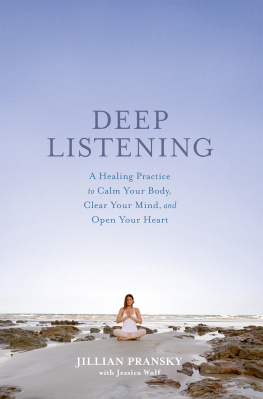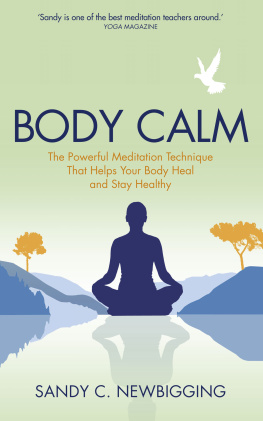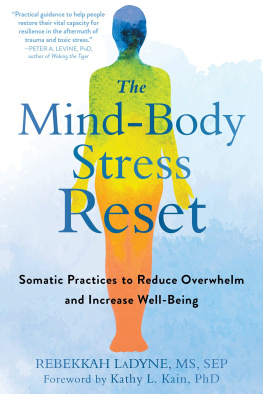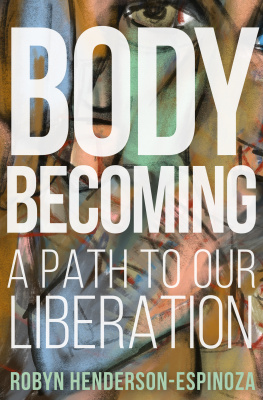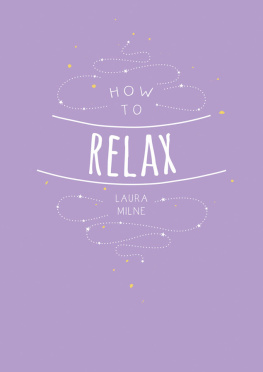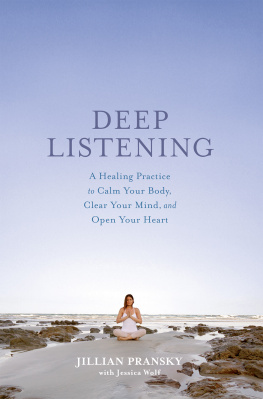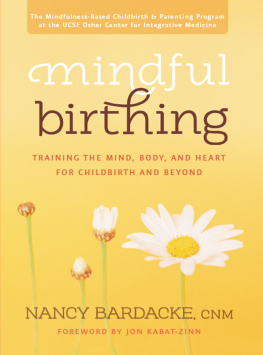
Mention of specific companies, organizations, or authorities in this book does not imply endorsement by the author or publisher, nor does mention of specific companies, organizations, or authorities imply that they endorse this book, its author, or the publisher. Internet addresses and phone numbers given in this book were accurate at the time it went to press.
2017 Jillian Pransky
All rights reserved. No part of this publication may be reproduced or transmitted in any form or by any means, electronic or mechanical, including photocopying, recording, or any other information storage and retrieval system, without the written permission of the publisher.
Photographs by Mitch Mandel/Rodale Images
Book design by Carol Angstadt
Freelance designer: Ariana Abud
Library of Congress Cataloging-in-Publication Data is on file with the publisher.
ISBN 9781623368562 hardcover
ISBN 9781623368579 e-book

We inspire health, healing, happiness, and love in the world.
Starting with you.
RodaleBooks.com
RodaleWellness.com
FOR MY MOM AND DAD,
PHYLLIS, AND PAUL.
THANK YOU.
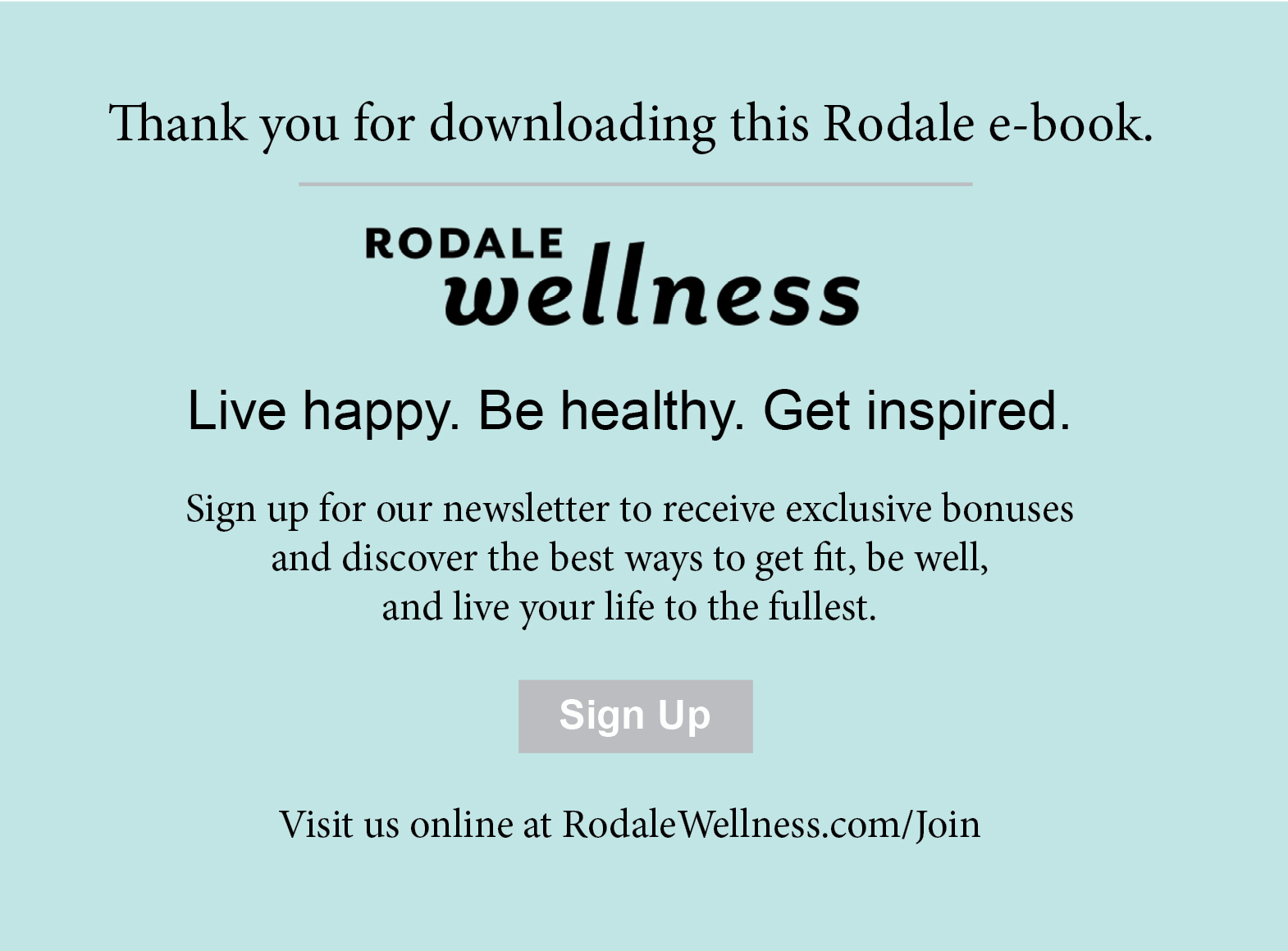
CONTENTS
You are not a drop in the ocean.
You are the entire ocean in a drop.
RUMI
INTRODUCTION
THE DEEP LISTENING JOURNEY

D eep Listening is the process of truly connecting to ourselves and our lives. It isnt so much a specific technique as it is an approach to how we receive and respond to ourselves and others.
Over the past 25 years, Deep Listening has helped me recover from injuries, illness, and grief. It has helped me better understand my challenging relationships and become closer to the people who are important to me. And through teaching this practice, Ive discovered a number of things. Namely:
Most of us are used to living life as a series of reactions to whats going on around us.
Most of us feel stressed and overwhelmed much of the time.
Most of us live with tension in our body that is wreaking havoc on our health.
Most of us suffer from anxiety and dont know why it arises.
Most of us carry around powerful emotional narrativesthe stories we tell ourselves about our undigested painand were not sure how to heal those hurts from the past.
Most of us dont understand how to change the habits that keep us stuck.
And most of us dont know how to be gentle, kind, and compassionate with ourselvesthe conditions that allow us to evolve.
The more Ive learned about how our bodies work, how our minds work, and how stress is at the root of so much of our fatigue, burnout, anxiety, addiction, and illness, the more Ive been able to organically incorporate that information into my teaching.
But the truth is, stress is not really the problem. The problem is that we need to respond differentlynot only to stress but to anything that makes us uncomfortable. And most of us have no idea how to do that.
Deep Listening is the habit of paying close and tender attention to our body, our mind, and our heart so we can meet our stress differently. This type of attention provides us with more resources and a greater capacityphysically, mentally, emotionally, and relationallyto respond calmly, clearly, and wisely, and also to engage more fully and expansively in our life.
Were going to develop Deep Listening tools that focus on experiencing our connectedness. This feeling of connection not only changes the way we respond to stress, it actually leaves us feeling less stressed, increases the amount of joy in our life, and sets the conditions for us to evolve.
That might sound like a big promise, but its not. Were designed to feel deep connections. And we are going to learn how.
THE ARC OF OUR JOURNEY

Slowly and gently, we are going to develop a strong foundation that we can rest on any and every time we meet challenges in life.
After each chapter, you ll find a short series of practices to bring the material to life. I highly recommend trying at least a few as you move through the book. They offer a deeper understanding of the material and help us recognize all that we hold in our body and mindand, of course, how to release it. But more important, the practices offer us a deeper understanding of ourselves.
To begin, were going to focus on our body and mind, exploring, little by little, the limitations that keep us from experiencing our own well-being. Later on, well go deeper, using what weve learned to develop a practice that sets the conditions to live more openheartedly.
This work is sequential and progressivemeaning the techniques we practice early on allow us to develop the practices that come later. But the material is also interconnected. So while each practice technique can be done on its own, its the sum of the practices that creates the framework for us to become more calm, clear, and open. As youll see: Everything you do adds up.
A LITTLE + OFTEN = A LOT

I f youre new to a daily practice, the idea of doing something every day may seem daunting. But I encourage my students to do a little bit often rather than feel they have to take on a lot all at once. Ive always believed that we get the best results when we work at a pace that feels right for us personally. However, my faith in how much benefit we get from small, quiet changes was solidified a few years ago through an experience I had with my son, William.
William was born with a life-threatening allergy to gluten and wheat. That means that if he ate a pretzel handed to him by a well-meaning toddler, he would stop breathing. When you have to guard your child from almost everything his friends are likely to be eating, its pretty terrifying. Then, when you start imagining your child away at college, having a few drinks and accidently taking a bite of a hamburger, you become completely overwhelmed.
William was so allergic that he would have an anaphylactic reaction if he were merely kissed by someone who had traces of wheat on their lips. In fact, the severity of his allergies was one of the reasons we were invited to participate in a clinical study about building tolerance to wheat.
Every other week for 2 years, William was given microscopic amounts of wheat in progressively larger doses. He started with 6 milligramsjust shy of the amount that would trigger his anaphylaxis. For context, a teaspoon of wheat is about 2,700 milligrams.
Over the course of the study, my son went from being unable to tolerate a wheat-on-the-lips kiss to being able to eat a slice of bread with no reaction.

